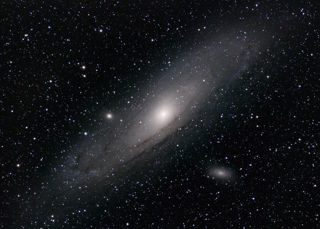
Apollo-era Fecal Containment Device
Apollo-era Fecal Containment Device
Offal Waste/Waste Management System (OW/WMS) Collection Unit - a specially devised plastic bag of the type used for going to the toilet in the Apollo Command Module. Also referred to as an Apollo Fecal Containment Device, it was part of the system put in place to deal with the necessary bodily functions that were unavoidable during a multi-day mission to the Moon.Before the advent of modern space toilets, which use a vacuum to create an airflow that draws material away from the body, American astronauts had to use a much more low-tech approach to deal with their bodily functions. Apollo astronauts used a plastic bag to collect their faecal waste, which had a special finger tube located half way down, allowing the user to insert a finger and dislodge material from the body and manipulate it further into the bag without actually touching it. On Earth gravity assists this most simple human activity, but in the weightless space environment things could get messy and even dangerous without this ingenious device.
Apollo astronauts had to undo the outer Fecal/Emesis (FE) bag to get at the main Fecal bag inside. They would then stick the opening of this bag to their bottom, using the Stomaseal tape that was fixed to the opening. Once finished the astronaut placed any wipes used into the Fecal bag, before putting it all into the outer FE bag. A germicidal liquid pouch was placed inside too, which could be broken open with force to mix the waste material with the germicide. This prevented any build-up of nasty gases – which was important, as the solid waste was not vented into space the way liquid waste was. Instead it was stored inside the Waste Stowage Compartment, which kept the used bags sealed away from the crew. According to the notes of Walt Cunningham, who flew aboard the Apollo 7 mission, the whole process could take around 45 minutes to carryout. Most crew members stripped almost entirely naked and went down to a void beneath the crew seats for a little privacy.
Samples collected inside this type of bag were studied upon return to Earth, as part of the medical investigations and experiments that were undertaken during Apollo. They could also be used as sick-bags to cope with the motion sickness that some astronauts experienced. Rusty Schweickart suffered a particularly extreme case on Apollo 9, with bags like this one becoming of vital importance in the cramped spacecraft.
This particular Fecal Containment Device was manufactured in late 1972 - just slightly before the final Moon landing of Apollo 17. According to the Manned Spaceflight Center tag (see pic), it was declared damaged in November 1972 - making it surplus to requirements. Most likely the inner germicidal liquid pouch was broken, meaning that the bag could no longer be used - leaving the grainy black residue that can be seen in the bag today.
All images:
-
![Apollo-era Fecal Containment Device]()
Apollo-era Fecal Containment Device -
![Apollo-era Fecal Containment Device]()
Apollo-era Fecal Containment Device -
![Apollo Fecal Containment Device NASA ID tag]()
Apollo Fecal Containment Device NASA ID tag -
![Close up of labels]()
Close up of labels -
![Close up of text, revealing how the details about the user of the bag and time of use etc., all needed to be recorded]()
Close up of text, revealing how the details about the user of the bag and time of use etc., all needed to be recorded -
![An image of an Apollo Fecal Containment Device unpacked - Credit: NASA]()
An image of an Apollo Fecal Containment Device unpacked - Credit: NASA -
![An unusual photograph 'demonstrating' how the Fecal Containment Device was used - Credit: NASA]()
An unusual photograph 'demonstrating' how the Fecal Containment Device was used - Credit: NASA -
![Representation of the Waste Management System of the Command Module - Credit: NASA]()
Representation of the Waste Management System of the Command Module - Credit: NASA
More information
Object number
2017-33
Location
Artefact Store
Has this object been into space?
No
Dimension - Dimension, Value, Measurement unit
Width: 21.5cm
Length: 38.1cm
Depth: 1cm
Material
Plastic
Stomaseal® tape
Inscription Content - Content
BY DILECTRIX CORP. FOR FAIRCHILD, REPUBLIC OW/WMS COLLECTION UNIT P/N 115D402104-101 Rev. F S/N C.H. 1904 DATE 10-72 "CLEANED PER FAIRCHILD INDUSTRIES SPECIFICATION NO. MS11650011"
Associated Organisation
Fairchild Industries
National Aeronautics and Space Administration
Object Production Date
10/1972
Object Production Organisation
Dilectrix Corporation
Object Production Place
New York
Long Island
Farmingdale
United States
On Display Status
In storage
Copyright and Photos
Photography is shared via the license below.
However, some objects on this website are on loan to the National Space Centre and are being shared through the permission of their owners.
Commercial use of images from this website is not allowed without additional permissions being granted. To request permission to use images for purposes not covered in the license below, please contact [email protected]
Individual objects on loan to the National Space Centre may have additional copyright permissions, so advice should always be sought before use.
![]()
This work is licensed under a Creative Commons Attribution-NonCommercial 4.0 International License.









